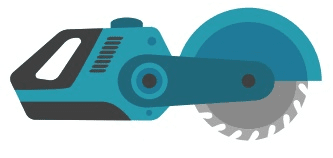Why Is Precision Mitre Saw So Popular?

Precision Mitre Saw: The Ultimate Guide
When it comes to woodworking, precision is vital. A tool that stands out for its accuracy and adaptability is the precision mitre saw. This necessary tool enables artisans to make accurate angled cuts that are critical in framing, cutting, and general woodworking. In this blog site post, we shall explore the functions, types, advantages, and factors to consider when picking a precision mitre saw, in addition to responding to some often asked concerns.
What Is a Mitre Saw?
A mitre saw is a customized tool created to make basic crosscuts and mitre cuts-- basically angled cuts used in woodworking jobs. Unlike conventional saws, which require substantial manual dexterity and skill to accomplish ideal angles, a mitre saw supplies a guided mechanism to develop perfect cuts with precise angles.
Key Features of a Precision Mitre Saw
| Function | Description |
|---|---|
| Blade Size | Normally ranges from 8 to 12 inches; bigger blades can handle thicker products. |
| Mitre Angles | A lot of mitre saws can be adapted to multiple angles, commonly approximately 45 degrees. Some advanced models enable for even greater range. |
| Bevel Cuts | Some mitre saws can make bevel cuts (tilting the blade) for complex angles; these are referred to as compound mitre saws. |
| Laser Guide | High-end designs often include laser guides that project a line on the workpiece for boosted accuracy. |
| Dust Collection | Quality mitre saws come equipped with dust collection systems that assist keep your workspace clean. |
| Table Size | A larger table supplies better assistance for long pieces of wood and promotes stability. |
Kinds Of Precision Mitre Saws
When thinking about a precision mitre saw, you'll come across different types, each catering to specific needs and tasks. Here's a breakdown of the primary types:
| Type | Description | Suitable Use |
|---|---|---|
| Requirement Mitre Saw | Features a standard up-and-down movement for simple crosscuts and mitre cuts. | Basic carpentry jobs. |
| Compound Mitre Saw | Permits bevel cutting in addition to basic cuts. | Crown molding and framing. |
| Sliding Compound Mitre Saw | Features a sliding arm that extends the cutting capacity for larger materials. | Wider boards like plywood. |
| Digital Mitre Saw | Includes digital readouts for precision settings. | High-end woodworking projects. |
Benefits of Using a Precision Mitre Saw
- Accuracy: The precision of mitre cuts made with this tool can not be overstated. It considerably decreases human error in angles and cuts.
- Performance: Precision mitre saws enable quick measurements and repeatable cuts, significantly speeding up project timelines.
- Adaptability: With numerous types of saws offered, users can pick a design that best fits their project requirements, whether it's simple cross-cuts or complicated crown molding.
- Security Features: Modern mitre saws come equipped with safety features, such as blade guards and electric brakes, protecting against mishaps.
- Professional Finish: A precision mitre saw enables property owners and professionals alike to achieve a more refined look in their projects.
Factors to consider Before Buying
Before acquiring a precision mitre saw, a number of factors must be evaluated:
- Project Requirements: Assess the most common kinds of cuts you will make. If complicated angles are your main focus, a compound or sliding design may be needed.
- Workspace: Consider the size of your office and just how much space you can assign for a mitre saw. Larger saws need more room.
- Spending plan: Determine just how much you want to invest. Precision mitre saws can differ substantially in cost based on functions and capabilities.
- Brand Reputation: Look for brands understood for durability, customer assistance, and product reviews.
- Extra Features: Determine which extra functions (laser guide, dust collection, etc) are necessary for your work.
FAQ about Precision Mitre Saws
1. What size mitre saw do I need?
The size of the mitre saw you require depends on the product you'll be cutting. For the majority of home projects, an 8-inch to 10-inch saw is adequate. If you work with larger slabs or products, choose a 12-inch model.
2. Can a mitre saw cut through metal?
While basic mitre saw blades are created for wood, there are specialized blades offered that can cut through aluminum or wood with metal inserts. Utilizing a standard blade on metal can harm both the blade and the saw.
3. Are sliding compound mitre saws worth the financial investment?
Yes, sliding compound mitre saws are generally worth the investment, particularly if you often deal with bigger products. They enable higher cutting capacity and adaptability, making them perfect for detailed jobs.
4. How do I preserve my mitre saw?
Routine maintenance involves:
- Keeping the blade sharp for tidy cuts.
- Cleaning up the saw after usage to avoid dust and debris buildup.
- Lubricating any moving parts, if essential.
- Looking for loose parts and tightening them periodically.
5. What safety precautions should I take?
Always use security goggles, keep hands away from the blade, and ensure that the workpiece is safely held in location before cutting. Constantly follow the producer's safety standards.
A precision mitre saw is an indispensable tool for both amateur and professional woodworkers alike. From www.powertoolsonline.uk to the ability to deal with complicated cuts, it transforms the woodworking experience into one that is not just effective but also enjoyable. Whether you're building a custom cabinet, framing a space, or just creating DIY jobs, comprehending the complexities of a precision mitre saw can substantially improve your woodworking video game. By adequately evaluating your needs and comprehending the alternatives readily available, you can with confidence choose a mitre saw that completely fits your task goals.

